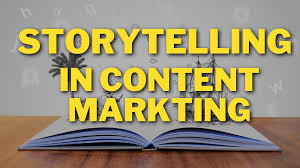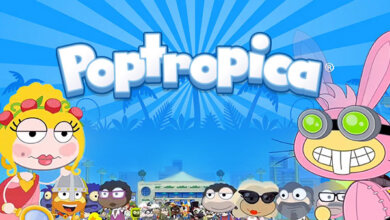Storytelling in Content Marketing: Psychology Meets Strategy

In today’s digital-first ecosystem, audiences are no longer swayed by sales-heavy jargon or static brand messages. Instead, they respond to narratives — genuine, emotionally resonant, and strategically told stories that captivate their attention and subtly influence their decisions. This convergence of human psychology and digital communication forms the crux of Storytelling in Content Marketing, an evolving approach that blends age-old narrative techniques with cutting-edge marketing tactics.
Brands across industries are realizing that to win hearts — and conversions — they need to think less like advertisers and more like storytellers. Stories elicit emotions, shape memories, and drive action, all of which are crucial in an overcrowded digital marketplace. At its core, storytelling is not a trend. It’s the foundation of how humans make sense of the world. When aligned with content marketing, it becomes a powerful psychological trigger that enhances brand perception, loyalty, and ultimately, revenue.
The Psychological Science Behind Storytelling
To understand why storytelling is so effective in marketing, it’s essential to look into how our brains process stories. Neuroscience reveals that when we hear stories, especially those with emotional elements, our brain releases oxytocin — a hormone responsible for empathy and connection. This hormonal response increases the likelihood that audiences will trust the narrator, which in marketing terms, translates into trust in a brand.
Furthermore, stories activate multiple areas of the brain: the sensory cortex, motor cortex, and frontal cortex, to name a few. This means stories aren’t just heard; they’re felt, visualized, and remembered. Compare this to plain data or marketing facts, which typically engage only the language processing centers of the brain. A narrative with a clear protagonist, conflict, and resolution taps into our intrinsic craving for meaning and continuity.
Storytelling also plays a major role in cognitive bias. The “identifiable victim effect,” for instance, shows that people are more likely to act when presented with a personal story rather than statistics. Marketers can harness this bias to humanize brands and deliver messages that resonate deeper than traditional promotional content.
The Strategic Role of Storytelling in Content Marketing
Strategically, storytelling becomes the vehicle that drives the customer journey. From awareness to conversion, stories can be structured to guide potential customers through various stages of the marketing funnel. At the top of the funnel, a compelling origin story might spark curiosity. Midway through, a case study told through the lens of a relatable client can build trust. At the bottom, testimonials presented as mini-narratives can seal the deal.
But effective storytelling doesn’t happen by chance. It demands an understanding of your audience’s values, struggles, and aspirations. Brands must use data analytics and audience insights to create personas, which in turn help craft stories that speak directly to their target demographic. A generic tale won’t work in this era of personalization. Instead, each piece of content must feel like a tailored experience, crafted with intent and purpose.
In practice, storytelling in content marketing might take various forms: blog posts, videos, podcasts, email series, or even interactive content. What unites them is a consistent voice, a narrative arc, and an emotional hook. Consistency across formats ensures that the story becomes part of a broader brand narrative, reinforcing its identity at every touchpoint.
Emotional Resonance and Authenticity
Emotion is the currency of storytelling. In content marketing, emotional resonance builds bridges between the brand and the consumer. It’s not about being overly sentimental or dramatic — rather, it’s about being human. Stories of real customers overcoming obstacles with your product, behind-the-scenes looks into company culture, or missions that support social causes all tap into emotional truths.
Authenticity, meanwhile, is the backbone of emotional storytelling. Consumers today are adept at detecting disingenuous content. If a story feels exaggerated, scripted, or self-serving, it risks damaging trust. This is where brands must tread carefully, grounding their narratives in honesty and relatability. Storytelling that exaggerates or manipulates will backfire, especially in a digital world where transparency and accountability are paramount.
Case Study: Nike’s “You Can’t Stop Us” Campaign
An iconic example of strategic storytelling is Nike’s “You Can’t Stop Us” campaign. Rather than promoting products directly, the brand spotlighted stories of athletes breaking barriers, communities uniting through sports, and resilience in the face of adversity. The visual storytelling, paired with real-life footage and emotionally charged narration, positioned Nike not just as a sportswear brand but as a catalyst for social movement. This approach not only engaged viewers but deepened loyalty among its diverse audience.
This campaign demonstrates how brands can transcend commercial messaging by embedding themselves in broader, values-driven narratives. Nike didn’t talk about features; it talked about beliefs — and that’s where storytelling in content marketing finds its true strength.
How Storytelling Supports SEO and Digital Visibility
From a strategic SEO standpoint, storytelling improves engagement metrics that influence search rankings. Stories tend to increase time spent on page, reduce bounce rates, and prompt social sharing — all of which are signals Google favors. Moreover, narrative content naturally incorporates long-tail keywords in a conversational tone, enhancing visibility without keyword stuffing.
For instance, an article integrating keywords like digital marketing course online can use storytelling to demonstrate how a student’s life changed after completing such a course. This not only meets search intent but also builds credibility through a relatable story. Search engines are increasingly prioritizing helpful, people-first content, and storytelling ticks every box.
The Future of Content Marketing Is Story-First
As artificial intelligence and automation reshape digital marketing, the value of uniquely human elements like storytelling becomes even more critical. While AI can generate content, it lacks the soul that compelling stories possess. Brands that master the art of storytelling will stand out in an era where attention spans are short, and authenticity is non-negotiable.
However, the future of storytelling in content marketing also involves data-informed creativity. Marketers will need to blend behavioral insights with narrative innovation, continuously refining stories to match shifting audience expectations. Interactive formats — like AR-driven experiences, immersive videos, and gamified storytelling — will play a larger role in keeping users engaged.
In conclusion, storytelling is not just a tool in the content marketing toolkit — it’s the strategy itself. When psychology meets strategy, brands create experiences that are not only memorable but meaningful. Those who learn to tell better stories will not only earn higher engagement but will cultivate communities around their message. Whether you’re promoting a product, a service, or even a digital marketing course online, a well-crafted story remains your most powerful marketing asset.




